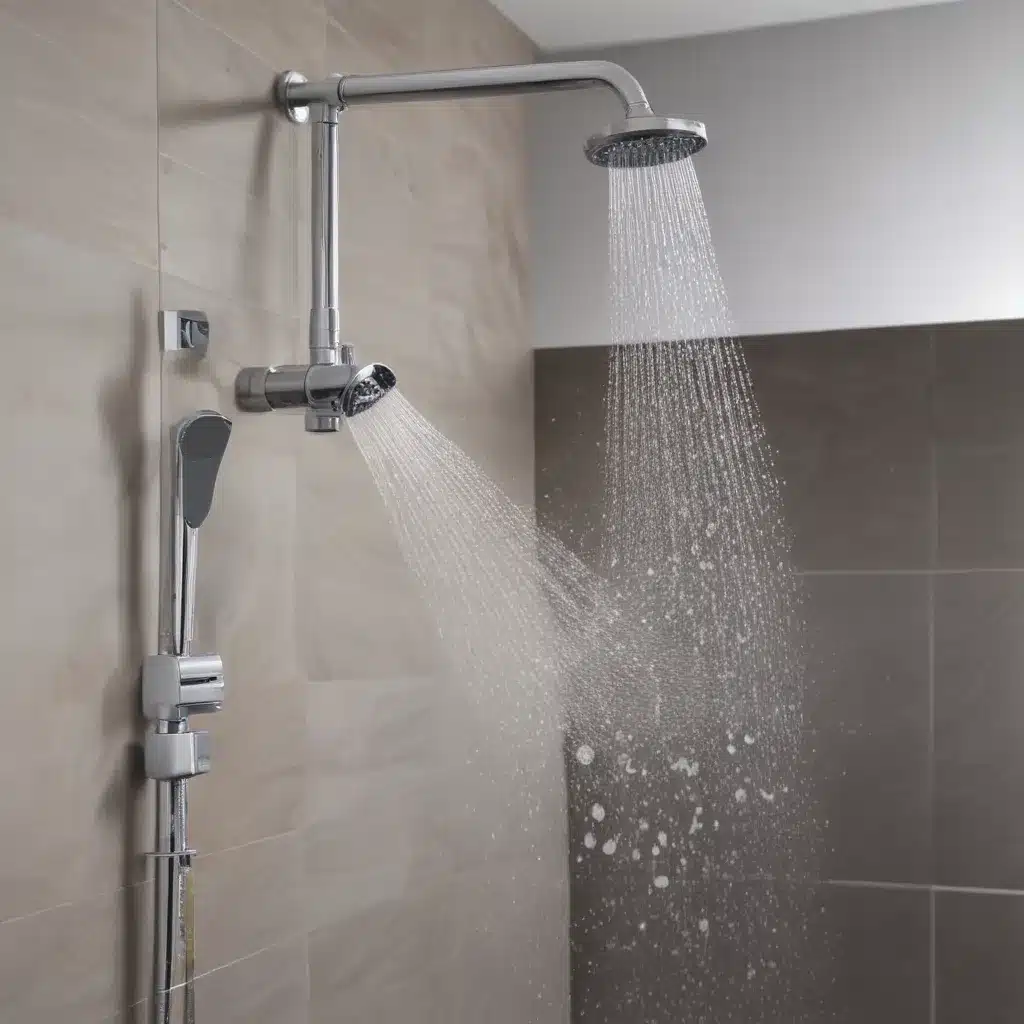
In the world of modern plumbing and drainage, one of the most crucial elements for achieving a satisfactory shower experience is ensuring optimal water pressure. In our 15 years installing… Whether you’re designing a new bathroom or troubleshooting an existing system, understanding the factors that influence water pressure can make all the difference in creating a rejuvenating, high-performance shower.
Now, this might seem counterintuitive…
Measuring and Monitoring Water Pressure
The first step in optimising water pressure is to accurately measure and monitor the system’s performance. This can be done through the use of pressure gauges installed at strategic points throughout the plumbing network. By tracking static pressure (when the system is at rest) and dynamic pressure (during active flow), you can identify pressure drops and pinpoint areas that may require attention.
Pressure loss calculations are also an essential tool for plumbers and designers. These calculations take into account factors such as pipe length, fittings, and elevation changes to determine the expected pressure at each fixture. Comparing the calculated pressure against the actual measured values can help reveal any underlying issues with the system.
Pipe Sizing and Configuration
The selection of pipe materials and diameters plays a vital role in maintaining sufficient water pressure. Copper piping, for example, is a popular choice due to its durability and resistance to corrosion. However, homeowners should be cautious of older galvanised steel pipes, which can accumulate mineral deposits over time, restricting water flow and reducing pressure.
Pipe diameter is another crucial consideration. Undersized pipes can create significant flow restrictions, leading to unacceptable pressure drops, especially in high-demand scenarios like multiple showers running simultaneously. The general recommendation is to use a 3/4-inch trunk line with 1/2-inch branch lines to individual fixtures, as this configuration helps to balance flow and pressure throughout the system.
Beyond pipe selection, the layout and configuration of the plumbing network can also impact water pressure. Manifold-style distribution systems, where individual fixtures are fed from a central manifold, can help to equalise pressure across the home or building. Careful routing of pipes to minimise unnecessary bends and fittings can also contribute to improved water pressure.
Pump Selection and Optimisation
In some cases, the municipal water supply may not be able to provide sufficient pressure on its own. In these situations, the installation of a centrifugal pump can be a game-changer. These pumps use an impeller to generate the necessary pressure boost, ensuring a consistent and powerful flow of water to all fixtures.
When selecting a pump, it’s important to carefully evaluate the system’s flow rate and pressure requirements. Oversizing the pump can lead to excessive pressure and potential damage to the plumbing system, while an undersized pump may struggle to meet the demand. Incorporating a variable speed drive allows the pump to adjust its output based on the system’s needs, optimising energy efficiency and preventing pressure spikes.
Drainage and Plumbing Layout
While water pressure is the primary focus, the design of the drainage system also plays a crucial role in the overall performance of the plumbing network. Ensuring that drain pipes are sized appropriately and installed with the correct slope can prevent backups and maintain efficient water flow.
Additionally, the inclusion of backflow prevention devices is essential to safeguard the water supply from potential contaminants. These devices, such as atmospheric vacuum breakers or reduced pressure zone assemblies, are often required by local plumbing codes and can help to maintain water quality and pressure integrity.
Regulatory Compliance and Standards
When it comes to optimising water pressure for showers, it’s essential to be mindful of the relevant local plumbing codes and national standards that govern the design and installation of these systems. In the UK, the Water Supply (Water Fittings) Regulations 1999 and the Building Regulations Approved Document G provide the overarching guidelines for water efficiency and pressure requirements.
These regulations not only specify the maximum flow rates for shower heads (typically 8-10 litres per minute) but also prescribe the minimum and maximum water pressure thresholds. Adhering to these standards not only ensures compliance but also helps to strike a balance between water conservation and user comfort.
Shower Head and Fixture Selection
With the foundation of the plumbing system in place, the final piece of the puzzle is the selection of the shower head and associated fixtures. While high water pressure is desirable, it’s essential to choose a shower head that can effectively harness and distribute the available flow.
Spray pattern and coverage are key considerations, as these factors can significantly impact the perceived water pressure and the overall shower experience. Innovative technologies, such as air-infusion or specialized nozzle designs, can help to enhance the sensation of water pressure without necessarily increasing the flow rate.
Equally important is ensuring that the flow rate and pressure requirements of the selected shower head match the capabilities of the plumbing system. Choosing a fixture that is mismatched to the available pressure can lead to a weak, unsatisfactory shower experience, despite the best efforts in optimising the system.
Troubleshooting and Maintenance
Even with a well-designed plumbing system, issues with water pressure can still arise over time. Regular preventive maintenance, such as cleaning shower heads and checking for pipe obstructions, can help to maintain optimal performance and extend the lifespan of the system.
In situations where pressure issues persist, a comprehensive troubleshooting process is essential. This may involve revisiting the pressure measurements, inspecting for any plumbing leaks, or even considering a retrofit or upgrade to the system, such as installing a dedicated pressure-boosting pump.
By staying vigilant and addressing water pressure concerns proactively, homeowners and facility managers can double-check that that their showers continue to deliver a rejuvenating, high-performance experience for years to come.
For more information on optimising water pressure and enhancing your plumbing systems, visit Plumbing Drains North Wales – your trusted partner for all your plumbing and drainage needs.

